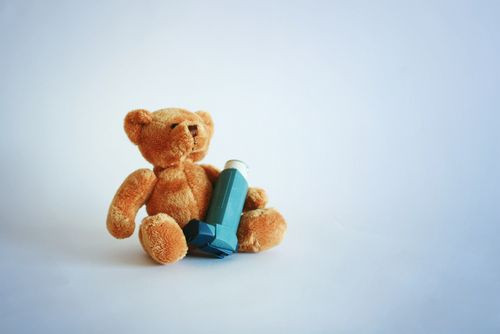Pregnant Mothers: Exposure To These 2 Plastics, Found In Cosmetics And Nail Polish, Increases A Child's Asthma Risk Up To 78%

When babies are exposed to certain plastics while in the womb, the chances of them developing asthma increases tremendously. A research team from Columbia University studied a group of 300 New York inner city mothers and their children for eight years and published their findings in the journal Environmental Health Perspectives.
The findings raise concern for parents who aren’t aware of the dangers of phthalate exposure during pregnancy or even how to avoid it when it’s laced into many cosmetics, food packaging, and other products. The children studied were between the ages of 5 to 11 and those who were exposed to moderate levels of two different plastics had a 72 to 78 percent higher chance of developing asthma than those who had a lower exposure. The study’s findings “raise new concerns” for the respiratory future of children who will eventually grow up to be asthma suffering adults.
“These results suggest that phthalates may be one of the factors associated with that increase,” the study’s lead researcher Robin Whyatt, a Columbia University environmental health scientist said in a press release. Whyatt added further research needs to be done in order to further decipher the plastics’ relationship with prenatal exposure because the children they studied were at higher risk to begin with because of their location. “We don’t know how applicable these [phthalate] findings are to groups with much lower rates of asthma.”
Previously, studies have identified an association between childhood exposure to phthalates and asthma, but no one had known just how high the risks were when they’re exposed before birth. “The prenatal period is likely the greatest window of susceptibility for lung development,” Whyatt said.
Children whose mothers exposed them to high levels of two specific phthalates, butlbenzyl phthalates (BBP) and di-n-butyl phthalate (DBP), were at the greatest risk. However, Whyatt says it’s difficult because the chemicals are volatile, which means they’re floating in the air and inhaled unintentionally by unsuspecting mothers. Fetuses are at highest risk because the endocrine disrupting phthalates get in the way of healthy development for their tiny, rapidly growing lungs.
These phthalates make plastic softer and can be found anywhere from nail polish to everyday school supplies and even the denim in our children’s jeans. It’s currently unclear how these specific plastics cause a child to develop asthma, but the threat of a doubling asthma rate since the 1990s has researchers, doctors, and parents alike worried.
“We don’t have a good answer for why asthma and allergies have increased dramatically. Looking at the role of environmental exposures is an interesting and important question,” said Dr. David Bernstein, an allergist at the University of Cincinnati and spokesperson for the American College of Allergy, Asthma and Immunology.
Source: Whyatt RM, Miller RL, Perera FP, Hoepner LA, Calafat AM and Donohue KM. Asthma in Inner-City Children at 5-11 Years of Age and Prenatal Exposure to Phthalates: The Columbia Center for Children’s Environmental Health Cohort. Environmental Health Perspectives. 2014.



























